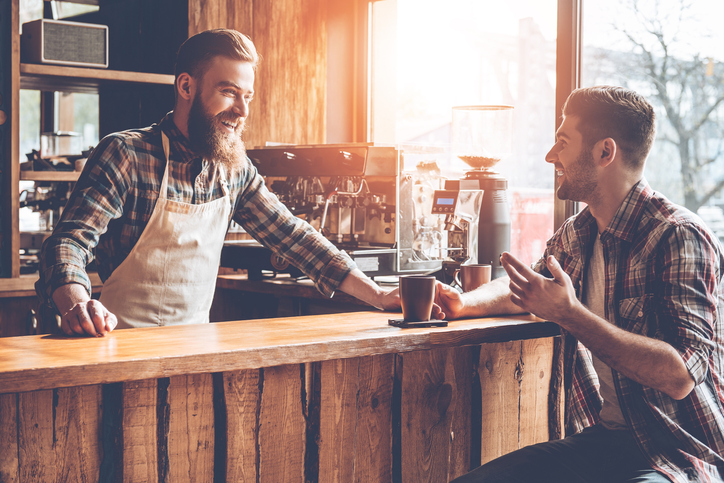04 June 2020
Or is it?
Soviet Sputnik and the USA Apollo program were two of the greatest marketing stunts of all time. It wasn't just about the technology - it was about inspiration.
I remember first hearing about Star Wars (the movie) from friends returning from America. It was released in May 1977 and in Australia, we had to wait until December to find out what the fuss was about.
Along with everyone else, I was stunned by the special effects and that was before digital graphics. The special effects in the original Star Wars' were optical; CGI came later.

Star Wars changed the movie aesthetic, switching from well-structured storytelling and dramatic themes to movies where the focus was gobsmacking special-effects. The story and even the acting became secondary.
Before Star Wars, special effects in films had not progressed much since the fifties. Star Wars was a step change.
This was an era where technology inspired awe, being just 8 years after the first moon landing.
Star Wars was launched into an era when people were still in awe of space travel and technology wasn't just a huge novelty but a promise of a better life. It was a different time to the present day.
The 20th century was an epoch of technological advancement.

The 20th century saw the introduction of eye-popping new technology and gadgets...
At the start of the 1900s (The Twentieth century) there was no internet, space travel, mobile phones, antibiotics, X-rays, or aeroplanes. In just 100 years an astonishing list of new technologies were not just invented but put into wide spread use.
Here is a sample of what was achieved...
Air conditioning, the triode valve (basis for the first electronic amplifier), atomic physics, powered flight, mains electricity, radio, stainless steel, Einstein's E= mc^2, thermal cracking (crude oil distillation), petrochemicals and plastics, colour film photography, quantum physics, sonar and radar, automatic transmissions, the LASER, penicillin (the first antibiotic), television, jet engines, super-sonic flight, the atomic bomb, atomic power, float glass (Pilkington process), transistors and other semi-conductors (solid state electronics), integrated circuitry and VLSI, main frame computers, quartz watch movements, contraceptive pill, electric typewriters, the Xerox machine, X-Ray machine, magnetic tape, the first heart transplant, Polaroid film, the Jumbo Jet, Concorde, fax machines, telephones with push buttons instead of dials, colour television, microwave ovens, Computerised Automated Tomography (CAT scans), pocket calculators, the microprocessor, automatic teller machines, Magnetic Resonance Imaging (MRI scans), personal computing, fibre optics, engine management systems, GPS navigation, Wi-Fi, digital photography, the internet and cellular telephones.
It was all amazing!
The common observation was "Gosh, what will they think of next?"
When you look through the above list (which is by no means exhaustive) and consider the implications of life before these inventions (for example Antibiotics, that weren't invented until 1928) it's not hard to envisage how exhilarating and perhaps even frightening the pace of technological advancement must have been.
Technology had the ability to inspire awe, capture the imagination and trigger deep emotional feelings.
It was a time of new hope and the feeling of increasing personal security comforted in the belief that technology would solve all problems. Medicine was making rapid advancement and the families of people seriously injured or sick were reassured by saying "today they can do amazing things."

Conversely, technology also inspired primal fear. Never did the world feel more unsafe, convinced we would all be destroyed during the cold war arms race. We were doomed to be vaporised by the atomic bomb. It was inevitable.
We've become inured to technology
We've emerged from the Twentieth Century with two kinds of people, older people who grew up during these technologically advancing years, and young people who have never known anything different.
To say we've become bored with technology is a stretch, but we have become accustomed to it. Like CGI (computer-generated imagery) in movies, technological advancement is the new norm.
Today, new technology is expected and no longer has the same "Gee Whizz" factor.
It might be true that the pace of developing "astounding" game-changing new technology (like penicillin, the transistor or the internet) has slowed.
The last thing that knocked my socks off was the introduction of flat-screen televisions and computer screens. Since then, technology seems to have become increasingly incremental, confined to niche industries, or just simply better ways of using, doing or combining already invented things.
In fact, the opposite may be true. People are finding more delight in rediscovering old technology.
The reverse trend is driven by the cognitive dissonance of welcoming new technology while at the same time feeling a wistful sense of losing something authentic as the old method or gadget is retired to make way for the new and improved.

Wouldn't it be nice to have a remote TV control with fewer buttons, mobile phones that just texted and dialed numbers, cars you could fix yourself with 3 spanners, a spark plug socket and a screwdriver, and groceries and household goods that don't come entombed in so much cardboard and plastic we can never seem to find enough space in the recycling bin?
People are growing beards, wearing op-shop clothes, drinking homemade beer out of recycled Vegemite jars and planting herbs. But, to be fair, they were doing that in the sixties.
However, speaking of the past, let's go back in time to when technology was a happening thing...
Technology has been a great tool for marketers
The first Moon Shot in 1969 was more about marketing than technology.

Kennedy used the ambition of "landing a man on the Moon by the end of this decade and returning him safely to the Earth" as a means to inspire a nation.
This was the era of the great space race. America and Russia were competing for international bragging rights. The stakes were simple and high. The Soviets aimed to demonstrate space technology superiority over the Americans to highlight the failures of democracy as a system of government and the success of communism.
The "Reds weren't under the bed" they were flying overhead in outer space.
The Sputnik Crisis - a terrifying technological publicity stunt
In 1957 the Soviet Union launched the first-ever satellite into an elliptical low Earth orbit. Sputnik was a 58 cm (23 in) diameter polished metal sphere, with four external radio antennas, it orbited for three weeks before its battery died, then continued silently for two more months before falling back into the atmosphere.

Sputnik didn't do much. It simply broadcast an eerie electronic beep transmitting on 20 and 40 MHz (frequencies within widely used short wave bands), which could be received by most radios throughout the world. Domestic receivers back then commonly received short wave as well as medium wave AM bands.
Basically, the Soviets had managed to put a car battery and a 1-watt radio transmitter into orbit.
As a terror machine, it was fiendishly simple, exploiting the widespread use of domestic radio receivers and the diligence of American journalists.
The strange beeping sound which could be heard slowly increasing in volume as Sputnik came over the horizon and then fading out was proof positive the Soviets were "up there" and their satellite was indeed orbiting the earth.
As much as it was a technological achievement, it was also a fantastic propaganda stunt. The citizens of America were terrified not helped by a willing free-press that milked the drama for all it was worth; a period of history known as The Sputnik Crisis. The Soviets had done it first and America was caught with its technological pants hanging around its ankles.
Sputnik was launched into space using an Inter-Continental Ballistic Missile (ICBM) rocket, and thus provided two propaganda advantages; being the first to put a satellite into space and proof the Soviets could land a nuke on American soil from Russia.
President Eisenhower's poll ratings hit an all-time low as reporters explained the phenomenon by revealing that the Soviets were educating scientists at three times the rate of America and were gaining a considerable technological advantage. Communism was more beneficial to society than Democracy. The proof could be heard on the radio - a simple beep.
The space race
The Sputnik Crisis triggered the creation of NASA beginning the space race and America invested heavily in rocket technology leading to John F Kennedy announcing to the American people the objective of "landing a man on the Moon by the end of this decade and returning him safely to the Earth."
For the time and the technology available, it was a bold statement.

A promise that was delivered on, through the extensive (and expensive) Apollo program during the sixties.
Consisting of a series of unmanned and manned flights including test flights around the moon before Apollo 11 successfully delivered Neil Armstrong to the surface of the moon in 1969.
Neil uttered the famous words, broadcast to billions of people across the marbled blue globe visible from where he stepped onto the moon...
It's one small step for (a) man; it's one giant leap for mankind.
It was stage-crafted showmanship on a global scale.
Compared to making a flying tin can that went "beep", seeing a man walking on the moon was in a technological league of its own; the American's were back on top.
